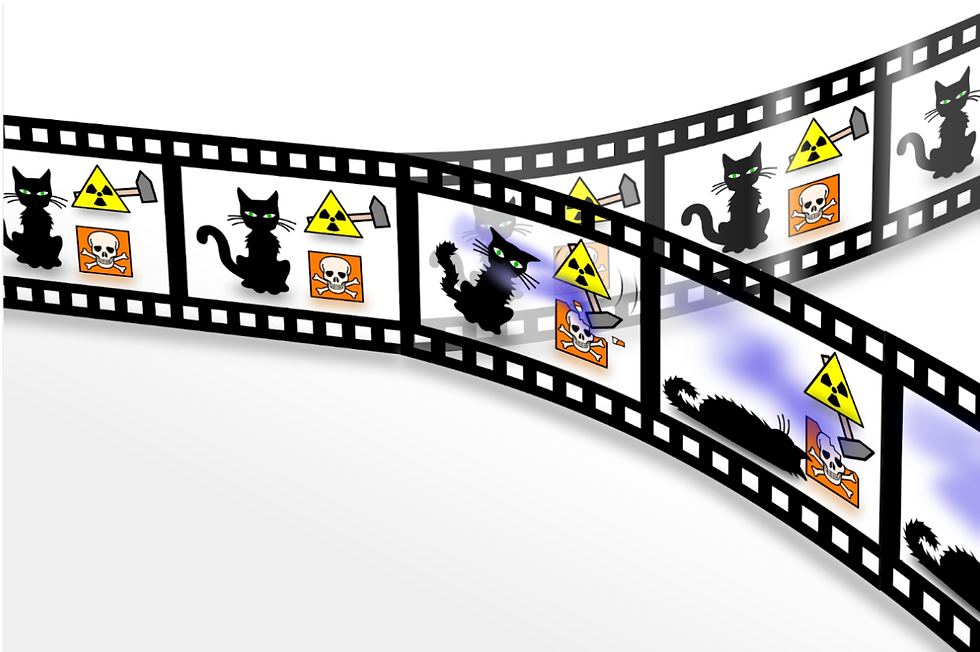In a previous article, we explored the concept of wave-particle duality and how quantum entities exhibit both particle-like and wave-like properties. Superposition, another quantum principle, states that a particle exists in multiple states simultaneously.
What is quantum superposition?
Quantum superposition is a concept in quantum physics that states tiny particles, like electrons or photons, can exist in multiple states at the same time. In everyday life, objects are usually in one state or another. For example, a light switch can be either on or off. But in the quantum world, things can be in a kind of "in-between" state. It's like having a light switch that is both on and off simultaneously.

Wave Functions
Quantum superposition is described using mathematical equations called wave functions. These equations give us probabilities of finding a particle in different states when we measure it. In a superposition, these probabilities exist all at once for different states. It's like the particle is in a combination of different possibilities.
A wave function provides information about the state of a particle or a quantum system. It contains all the possible outcomes or states that the particle or system can be in. The square of the wave function, known as the probability density, gives the probability of finding the particle in a particular state or at a specific location when measured.
The wave function can change over time according to the Schrödinger equation, which is a fundamental equation in quantum mechanics. This equation describes the time evolution of the wave function and how it changes in response to the particle's energy and potential in its environment.
Schrödinger’s Cat
Schrödinger's cat is a thought experiment that highlights the peculiar nature of quantum superposition. The experiment, proposed by physicist Erwin Schrödinger, involves imagining a cat inside a sealed box along with a radioactive substance, a Geiger counter, and a vial of poison. The experiment aims to illustrate the concept of superposition and the consequences of wave function collapse.

According to the principles of quantum mechanics, before the box is opened and observed, the cat's state is described by a superposition of two possibilities: alive and dead. This superposition arises, because the cat's fate is entangled with the radioactive substance. The radioactive substance has a 50% chance of decaying within a specific time frame, which triggers the Geiger counter to detect it and release the poison, resulting in the cat's death.
In the quantum realm, the cat is considered to be both alive and dead at the same time until an observation is made. The cat's state is described by a wave function that is a combination of the two possibilities. It is as if the cat exists in a strange "in-between" state, experiencing both outcomes simultaneously.
However, when the experimenter opens the box and makes an observation, the superposition collapses into a definite state. The cat is either found to be alive or dead. The act of observation forces the wave function to "choose" one of the possibilities, and subsequent measurements will always reveal the same outcome.
Applications
Quantum superposition is important, because it forms the basis for technologies like quantum computers. It allows for the potential for parallel processing and complex information encoding that can surpass classical computing capabilities. For example, superposition is able to perform tasks such as searching unsorted databases or integer factorization far more efficiently than regular computers.
Fun Facts
Quantum coin flipping: Superposition allows for interesting applications, such as quantum coin flipping. In a classical coin flip, the result is either heads or tails. However, in the quantum realm, a qubit (quantum bit) can be put into a superposition of both heads and tails, resulting in a probabilistic outcome when measured.
Quantum parallelism: Quantum computers perform computations on multiple states simultaneously, allowing for potential exponential increases in efficiency.
Superposition in nature: Migratory birds use quantum superposition to navigate using Earth's magnetic field. Their internal compass relies on the superposition of electron spins in specialized molecules, allowing them to sense and follow magnetic fields.
Works Cited
AZoQuantum.com. (2021). Bird Navigation: Quantum Physics in Biological Processes? [online] Available at: https://www.azoquantum.com/Article.aspx?ArticleID=227.
Caltech (2023). What Is Superposition and Why Is It Important? [online] Caltech Science Exchange. Available at: https://scienceexchange.caltech.edu/topics/quantum-science-explained/quantum-superposition.
Cooper, S. (2023). Quantum Superposition — Explained Simply and In-Depth. [online] Medium. Available at: https://medium.com/@sheroy.cooper/quantum-superposition-explained-simply-and-in-depth-82736420a939# [Accessed 28 Feb. 2024].
Quantum Atlas. (n.d.). Superposition. [online] Available at: https://quantumatlas.umd.edu/entry/superposition/.
West Texas A&M University (2013). What Did Schrodinger’s Cat Experiment prove? [online] WTAMU. Available at: https://wtamu.edu/~cbaird/sq/2013/07/30/what-did-schrodingers-cat-experiment-prove/.
.png)

Comments